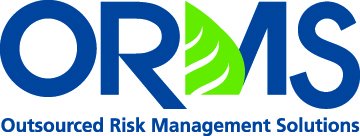SBA’s Latest SOP Reintroduces Clarity and Formalizes Lenders’ Role in the Environmental Review Process
Meeting the SBA’s Environmental Due Diligence Requirements During Times of Change
March 18, 2025CRE Mid-Year Checkpoint: Easing Interest Rates Fuel Cautious Optimism
August 13, 2025SBA’s Latest SOP Reintroduces Clarity and Formalizes Lenders’ Role in the Environmental Review Process
Given the recent staffing and policy changes at the U.S. Small Business Administration (SBA), it’s more important than ever for lenders to maintain a robust environmental review process to ensure their loan guarantees are secure.
The SBA landscape has evolved dynamically in 2025, most notably through staff reductions which have impacted environmental review processes at scale. Specifically, per the SBA Procedural Notice 5000-866054, effective March 20, 2025, the responsibility for environmental compliance now falls on the Certified Development Companies (CDCs) initiating 504 loans.
In addition, the SBA just released an updated Standard Operating Procedure (SOP 50 10 8), which will go into effect on June 1, 2025, replacing SOP 50 10 7.1. The revised SOP features a streamlined environmental submission process, more explicit instructions for handling contaminated properties, and greater clarity around lender responsibilities.
SOP 50 10 8 reinstates many of the formal steps that were included in the SOP prior to the SOP 50 10 7 edition. This is a favorable development, as the latest SOP provides clearer guidance than its predecessor and ensures that lenders are fully aware of all environmental requirements before they grant an SBA loan.
New SOP delivers clarity and efficiency
In Section A., Chapter 5, Section E. of SOP 50 10 8, the SBA lays out the environmental policies and procedures lenders must follow. These requirements differ from those in the prior standard in several important ways, including:
- Risks to the SBA guaranty: The SOP now explicitly states “failure to comply with the [environmental] provisions … may result in a denial of SBA’s guarantee.” This is a change from SOP 50 10 7.1 and reinforces the risks lenders—delegated and non-delegated—may face if they fail to adhere to proper environmental due diligence. Additionally, SOP 50 10 8 removes the previous language stating that “environmental policies apply only to real estate acquired, refinanced, or improved by the loan proceeds.” This opens the door to additional collateral falling under the environmental review requirements, even if it is not directly tied to the loan proceeds.
- Document retention and submission: Lenders are no longer required to submit environmental reports and other documents to the SBA for properties deemed to have no contamination. However, they are required to retain certain documents in the loan file including the Environmental Questionnaire, Records Search with Risk Assessment, Transaction Screen Analysis, Phase I ESA, Phase II ESA, and Specialty Property Testing.
- Child-occupied facilities: SOP 50 10 8 states that required lead risk assessments and water testing “must have been conducted within one year of reliance upon the report by the SBA Lender.” All test results must be retained in the loan file, and lenders may not disburse the loan proceeds “unless the risk of lead exposure to infants and small children has been sufficiently minimized.” These changes clarify the SBA’s timing requirements and reinforces the lender’s responsibility for assessing the risk of lead contamination and maintaining such records on file.
- Review process for exceptions based on “Other Factor(s)”: If a lender wishes to approve or disburse a loan through reliance on “Other Factor(s)” such as environmental insurance, Brownfields agreements, bonds, and other governmental agreements, they must now submit such request, along with the Environmental Investigation Report(s), for review by the SBA Environmental Committee at EnvironmentalAppeals@sba.gov.
- Streamlined submission process: The SBA has clarified and simplified its document submission process. SOP 50 10 8 removes all references to “SBA Centers” and now directs lenders to submit all required environmental reports, certifications, indemnification agreements, and other documents through E-Tran.
- Formalized appeal process: SOP 50 10 8 removes the prior SOP’s stipulation that “if at any stage of the Environmental Investigation SBA concurs with an SBA Lender’s recommendation that environmental risk has been sufficiently minimized and that no further investigation is required, the loan may be disbursed.” Currently, a lender’s only recourse if they disagree with an Environmental Professional’s findings is to send a formal appeal to EnvironmentalAppeals@sba.gov.
How ORMS helps lenders navigate SBA requirements
ORMS has been helping lenders manage their environmental review and compliance processes for close to 15 years. SBA lenders in particular have come to rely upon our environmental due diligence services to meet the latest SOP.
Now that the responsibility for ensuring environmental compliance is falling on the CDCs, ORMS’ role is even more important. We’ve adapted to the various SOPs over the years and are now considered the expert in the SBA process by both lenders and consultants.
“ORMS has been a great partner with The Bancorp for many years,” says Jeff Nager, Head of Commercial Lending for The Bancorp Bank. “Having a company with such vast knowledge of SBA environmental requirements allows us as the lender to focus on our business of originating and closing SBA 7(a) and 504 loans across the country. I would recommend that any SBA lender work with ORMS on their environmental needs to increase efficiency and protect the SBA guarantee by making sure all reports are compliant.”
If you’re seeking assistance with environmental reviews or navigating the SBA lending process, ORMS can help! Give us a call at 860.838.5388 or email us at info@orms.com to learn more.
